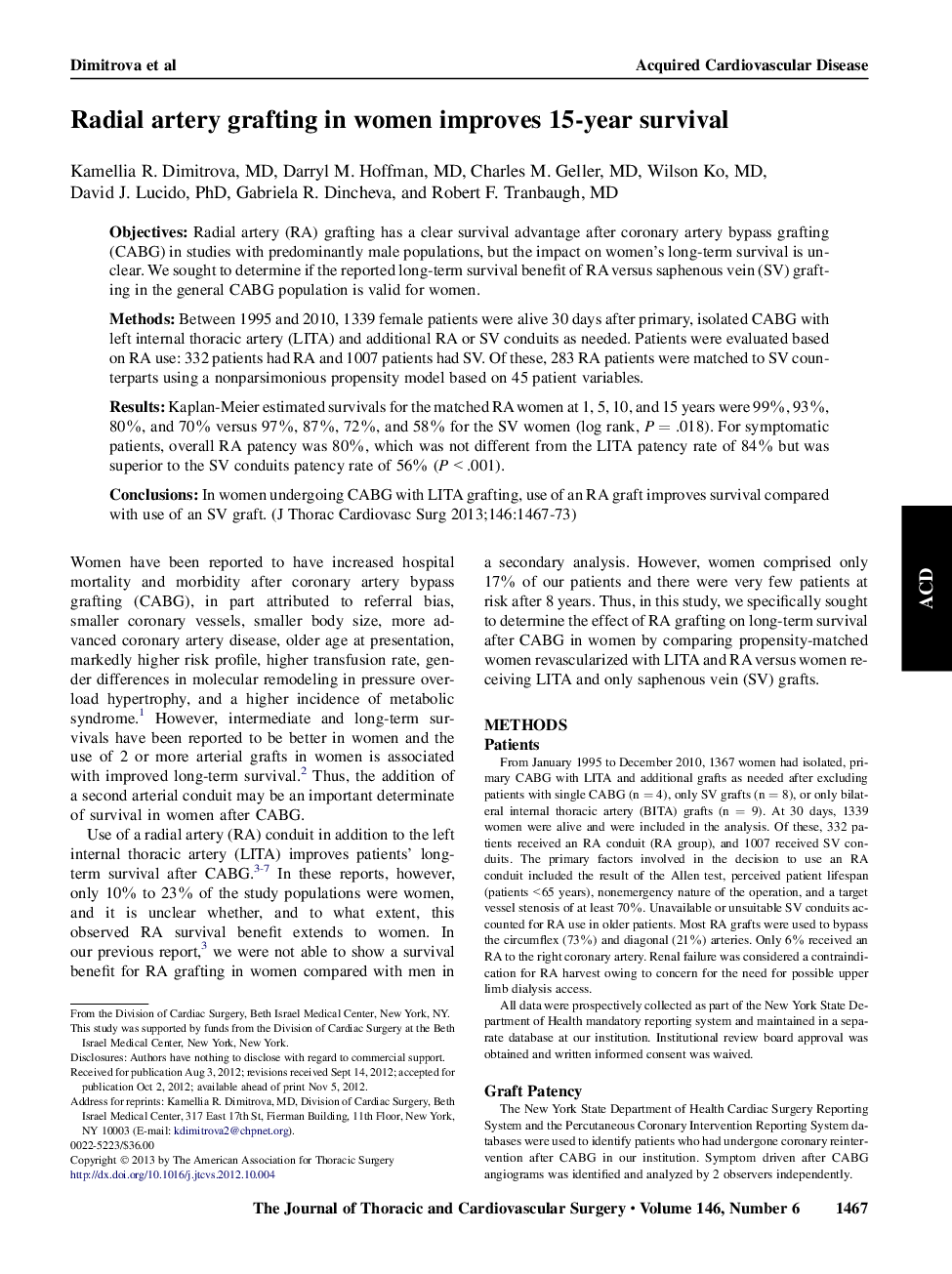| Article ID | Journal | Published Year | Pages | File Type |
|---|---|---|---|---|
| 2980856 | The Journal of Thoracic and Cardiovascular Surgery | 2013 | 7 Pages |
ObjectivesRadial artery (RA) grafting has a clear survival advantage after coronary artery bypass grafting (CABG) in studies with predominantly male populations, but the impact on women's long-term survival is unclear. We sought to determine if the reported long-term survival benefit of RA versus saphenous vein (SV) grafting in the general CABG population is valid for women.MethodsBetween 1995 and 2010, 1339 female patients were alive 30 days after primary, isolated CABG with left internal thoracic artery (LITA) and additional RA or SV conduits as needed. Patients were evaluated based on RA use: 332 patients had RA and 1007 patients had SV. Of these, 283 RA patients were matched to SV counterparts using a nonparsimonious propensity model based on 45 patient variables.ResultsKaplan-Meier estimated survivals for the matched RA women at 1, 5, 10, and 15 years were 99%, 93%, 80%, and 70% versus 97%, 87%, 72%, and 58% for the SV women (log rank, P = .018). For symptomatic patients, overall RA patency was 80%, which was not different from the LITA patency rate of 84% but was superior to the SV conduits patency rate of 56% (P < .001).ConclusionsIn women undergoing CABG with LITA grafting, use of an RA graft improves survival compared with use of an SV graft.
